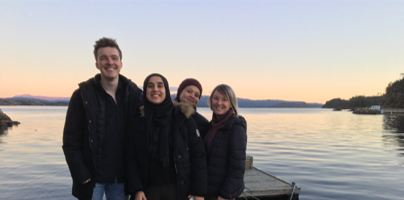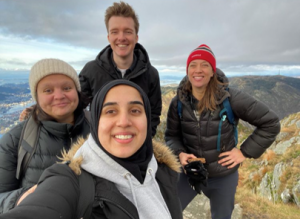
14 February 2022
Oil production in the Arctic is on the rise, which in turn makes oil pollution an ever-increasing threat. Crude oil spills can have devastating repercussions for marine organisms, including cardiotoxicity. It is thought that polyaromatic hydrocarbons such as phenanthrene are responsible for causing this damage to the heart. However, previous research into their effects have rarely considered the whole organism and have largely been concerned with embryonic fishes.

Daniel Ripley, a PhD student in Professor Holly Shiels’s lab at the University of Manchester, wanted to investigate the effects of phenanthrene exposure in juvenile fishes. A Travelling Fellowship from Journal of Experimental Biology helped fund his visit to the Havforskningsinstituttet (Norwegian Institute of Marine Research) in Bergen, where he was able to work with Dr Elin Sørhus and Dr Prescilla Perrichon to make this project a reality. Daniel also spent two weeks at the institute’s research station in Austevoll.
During his stay, Daniel investigated how metabolic performance of adult halibut (Melanogrammus aeglefinus) is affected by exposure to phenanthrene. The fish were chased to encourage a period of activity and then moved to a respirometry chamber where Daniel was able to measure the change in the water’s oxygen content over time. He used the rate of oxygen depletion as a proxy for aerobic metabolic rate and found that fish exposed to phenanthrene had elevated oxygen consumption post-exercise compared with the control group. They were also more lethargic, exhibiting reduced activity.
Daniel also delved into the molecular effects of crude oil on the hearts of marine organisms, using qPCR to investigate gene expression levels in heart tissue that had been exposed to phenanthrene. The samples were collected at a range of different time points over a total period of 4 hours. He focussed on genes that are expected to change their expression levels when the organism is under cardiac stress or remodelling. He has since returned to his home laboratory, where he is analysing these data.
The visit was galvanising for Daniel, who says that it “[…] has sparked plans for future research that will give us further insight into our research questions”. He thoroughly enjoyed his time in Norway, which was enriching both inside the lab and out: “[…] everyone at the institute made me feel very welcome, and the lab work was complemented with snowy hikes, beautiful scenery, and presenting at a day-long oil-pollution workshop”.









You must be logged in to post a comment.